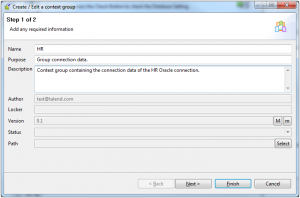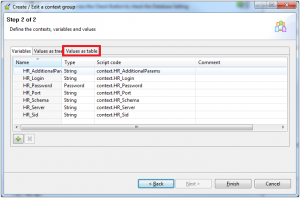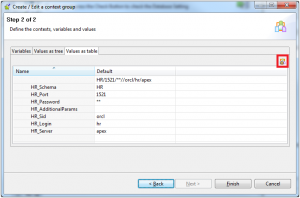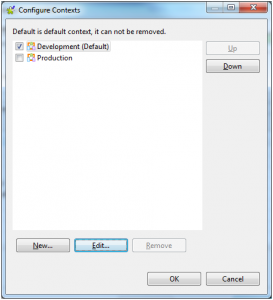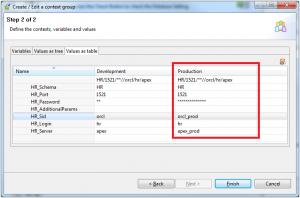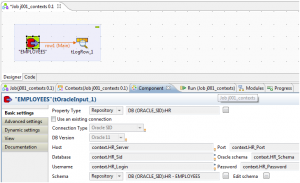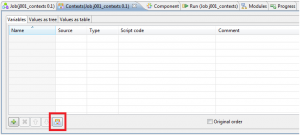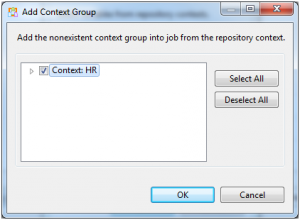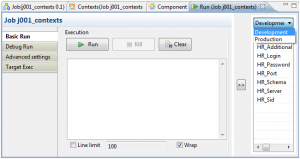Use of contexts within Talend
When developing jobs in Talend, it’s sometimes necessary to run them on different environments. For other business cases, you need to pass values between multiple sub-jobs in a project. To solve this kind of issues, Talend introduced the notion of “contexts”.
In this blogpost we elaborate on the usage of contexts for easily switching between a development and a production environment by storing the connection data in context variables. This allows you to determine on which environment the job should run, at runtime, without having to recompile or modify your project.
To start using contexts in Talend you have two possible scenario’s:
1) you can create a new context group and its corresponding context variables manually, or
2) you can export an existing connection as a context.
In this example we’ll go over exporting an existing Oracle connection as a context.
Double click an existing database connection to edit it and click Next. Click Export as context
NOTE There are some connections that don’t allow you to export them as a context. In that case you’ll have to create the context group and its variables manually, add the group/variables to your job, and use the variables in the properties of the components of your job.
After you’ve clicked the Export as context button you’ll see the Create/Edit context group screen. Enter a name, purpose and description and click Next.
Now you’ll see all the context variables that belong to this context group. Notice that Talend has already created all the context variables that are needed for the HR connection. If you want to change their names you can simply click them and they become editable.
Click the Values as table tab.
In the Values as table tab you can edit the values of the context variables by simply clicking the value and changing it. To add a new context, click the context symbol in the upper right corner.
The window that pops up is used to manage contexts. To create a new context, click New, enter the name of the context, in our example Production, and click Ok. To rename the Default context, select it, click Edit, enter Development and click Ok. When you’re done editing, click Ok.
After the window closes, you’ll see that an extra column appeared. Enter the connection data of the production environment in the Production column and click Finish.
In the connection window it’s possible to check the connection again, but this time you’ll be prompted which connection you want to check.
Verify that both the connections work and click Finish.
Now that we’ve exported the connection as a context, it’s possible to use it in a job. Create a new job, use the connection that has been exported as a context and connect it to a tLogRow component. Your job should look something like this
When using a connection that has been exported as a context in a job, you have to include the context variables in order for your job to be able to run. Go to the context tab and click the context button in the bottom left.
NOTE When using one of the newer versions, Talend proposes to add missing context variables whenever you try to run a job, because of this you don’t need to add them manually as described in this example.
Select the context group that contains the context variables, in our case the HR context group.
Select the contexts you want to include and click OK
NOTE A context group can also be added to a job by simply selecting the context from the repository, dragging it towards the context tab of the job, and dropping it there.
Once you’ve added the context group to the job, it’s possible to run the job for both the development and production environment by selecting the context in the dropdown menu of the Run tab.


